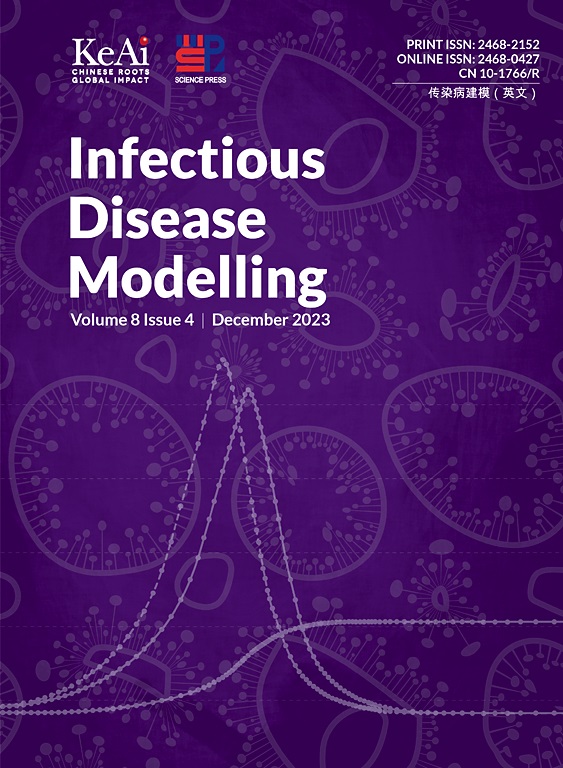2030年广东省消除成人乙肝的可行性:一项模型研究
IF 2.5
3区 医学
Q1 Medicine
引用次数: 0
摘要
消除乙型肝炎仍然具有挑战性,特别是在中国乙肝负担最高的广东省。预测发病率、优化疫苗接种和减少疾病对于实现世卫组织到2030年减少90%的目标至关重要。方法基于2005 - 2022年乙型肝炎病毒监测数据,分析疾病聚类模式、疫苗接种与发病率的相关性。采用非线性最小二乘法和多项式拟合方法,建立了六室传染模型,并对模型进行了验证。结果2005年至2022年,广东省急性HBV病例从7509例下降到2097例,而15岁以上成人慢性HBV病例从38595例上升到146658例。广州、佛山和深圳仍是高危聚集区。婴儿疫苗接种与减少急性感染有关,但对慢性病例的影响有限。到2030年,预计急性HBV感染病例将达到1872例,预计成人中将有100,354例新发慢性感染。为实现世卫组织2030年消除疟疾的目标,慢性携带者的平均康复时间必须从40年减少到7.7年。如果要完全消除,寿命应该缩短到1.85年。结论婴儿疫苗接种抑制了青少年的急性HBV,但成人的慢性病例威胁到消除目标。扩大治疗以加速慢性乙型肝炎病毒的恢复是迫切需要的。本文章由计算机程序翻译,如有差异,请以英文原文为准。
Feasibility of eliminating adult hepatitis B in Guangdong by 2030: A modeling study
Objectives
Eliminating hepatitis B remains challenging, especially in Guangdong, the region with China's highest burden. Predicting incidence, optimizing vaccination, and reducing illness are essential to meet the WHO goal of a 90 % reduction by 2030.
Methods
Based on the HBV surveillance data from 2005 to 2022, disease clustering patterns, correlation between vaccination and incidence were determined. A six-compartment transmission model was established and validated by estimating infectivity using nonlinear least squares and polynomial fitting.
Results
From 2005 to 2022, acute HBV cases in Guangdong declined from 7509 to 2,097, while chronic cases in adults aged ≥15 rose from 38,595 to 146,658. High-risk clusters remained in Guangzhou, Foshan, and Shenzhen. Infant vaccination was linked to reduced acute infections but had limited effect on chronic cases. By 2030, acute HBV infectivity is projected to reach 1872 cases, with 100,354 new chronic infections expected in adults. To meet the WHO 2030 elimination target, average recovery time for chronic carriers must be reduced from 40 years to 7.7 years. For full elimination, it should be shortened to 1.85 years.
Conclusions
Infant vaccination curbed acute HBV in youth, but chronic cases in adults threaten elimination goals. Scaling therapies to accelerate chronic HBV recovery is urgent.
求助全文
通过发布文献求助,成功后即可免费获取论文全文。
去求助
来源期刊

Infectious Disease Modelling
Mathematics-Applied Mathematics
CiteScore
17.00
自引率
3.40%
发文量
73
审稿时长
17 weeks
期刊介绍:
Infectious Disease Modelling is an open access journal that undergoes peer-review. Its main objective is to facilitate research that combines mathematical modelling, retrieval and analysis of infection disease data, and public health decision support. The journal actively encourages original research that improves this interface, as well as review articles that highlight innovative methodologies relevant to data collection, informatics, and policy making in the field of public health.
 求助内容:
求助内容: 应助结果提醒方式:
应助结果提醒方式:


